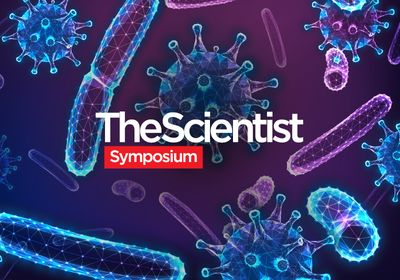ABOVE: © ISTOCK.COM, Georgejason
For a human, herpes is usually no more than a painful inconvenience, but for a mouse, catching the sexually transmitted infection is akin to a kiss of death. Injecting mice with human pathogens such as herpes simplex virus (HSV), as is often done in lab studies, can kill them in a matter of days. But not all mice are equally vulnerable. In a study published November 8 in Cell Reports, researchers found that thanks to differences in their vaginal microbiomes compared with lean mice, obese mice fed a high-fat diet had stronger immune responses against HSV-2, which causes genital herpes in humans. The finding offers insight into the mechanisms behind vaginal immune responses and the role of the microbiome in combating disease.
Biomedical scientists have linked obesity in humans to higher risk of cardiovascular disease, as well as greater cancer risk and in some cases impaired immune systems. Although obesity has been linked to a higher risk of cervical cancer mortality in women, scientists haven’t found any evidence of a link between herpes and obesity, according to the study. Researchers at the Korea Advanced Institute of Science and Technology (KAIST) led by immunologist Heung Kyu Lee wanted to test obesity’s effects on antiviral immunity, specifically against the common human sexually transmitted infection genital herpes. HSV-2 originated later in human history than the more prevalent HSV-1 type, which is known for causing oral herpes. Genital herpes affects more than 11 percent of people between the ages of 15 and 49, but has no cure. In comparing the immune response of lean and obese female mice, the study authors write in the study that they hoped to find out how obesity affects the immune response of the genital mucosa.
The researchers gave some of the mice standard food and fed others a high-fat diet. They then intravaginally infected all of the mice with HSV-2 virus and observed their immune response over the course of three weeks. The KAIST scientists write in the study that they expected it to increase susceptibility to HSV-2. To their surprise, they found that while all the lean mice died in the first two weeks, half of the obese mice survived the three-week period. The obese mice also started clearing the virus from their genital mucosa sooner.
The scientists used flow cytometry to figure out the relative abundances of different cells in the mucosa, then compared concentrations between obese and lean mice. They found that the vaginal mucosa of obese mice contained a higher level of cytotoxic gamma-delta (γδ) T-cells, a type of white blood cell typically rare in the body. When the researchers used an antibody to inhibit receptors for γδ T-cells, it significantly reduced the ability of obese mice to combat HSV-2, whereas it had no effect on lean mice, indicating that γδ T-cells played a role in the obese mice’s immunity.
Performing a similar analysis on the greater vaginal microbiome, the team found that administering antibiotics to remove commensal vaginal microbiota also significantly decreased obese mice’s survival. The microbiota of obese mice differed from that of the lean mice, with a higher level of gut-derived bacteria such as E. coli. When the researchers introduced E. coli into the vaginal microbiomes of lean mice, they found that it promoted viral clearance and prevented HSV-2 symptoms compared to controls. Based on this information, the scientists posit in their paper that obesity causes more gut-derived bacteria to move into the genital tract, and that these microbes mitigate HSV-2’s lethal effects by controlling the levels of γδ T-cells and other immune cells. The study authors did not respond to The Scientist’s requests for comment.
“It was a surprise that they found obesity actually played into viral infections in more of a positive fashion,” says Lorne Kastrukoff, a University of British Columbia neurologist who has studied herpes in the past but didn’t participate in the new study.
University of Washington translational immunologist David Koelle, who didn’t work on the study, agrees this is a fascinating study, but is “not sure how relevant [it] is to humans,” because HSV-2 interacts with the mouse body differently than it does humans. HSV-2 is a traditionally human pathogen: Although there is some debate around how and when HSV-2 made the jump to humans, Koelle says it has been coevolving with us for at least 1 million years. Mice, in contrast, would never normally contract either human herpes variant, so their bodies react very differently to it. In humans, the virus stays localized to one site, which for HSV-2 is usually the genital region. In mice, however, Koelle says the virus travels up the spinal cord and into the brain, which is what causes the animals’ eventual deaths.
Kastrukoff adds that the young age of the mice (5 weeks), the type of HSV-2, and the strain of mouse (C57BL/6 or “black 6,” a common inbred lab mouse) in the study could all have contributed to the atypical results. He explains that black 6 mice in particular have differently structured immune systems than other lab mice that could have contributed to this effect.
“It’s an interesting observation,” he tells The Scientist. “But a lot more studies have to be done before you can think about transporting the information to the human situation.”






